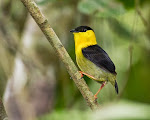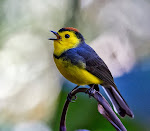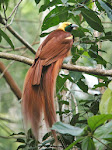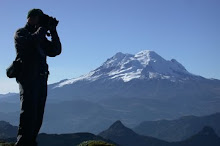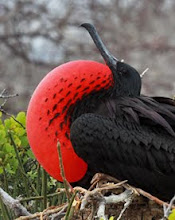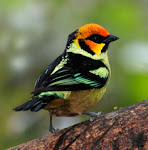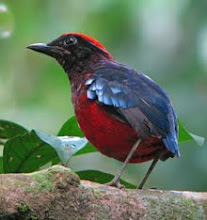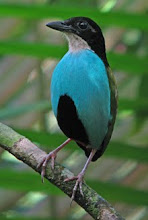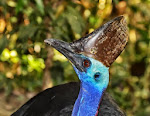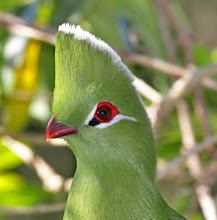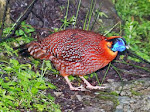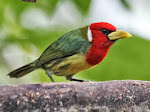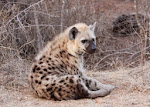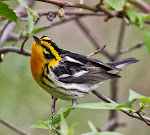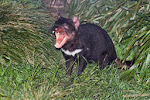Having already dipped into a variety of habitats, and locations, already on this sojourn in southern Ecuador, we continued on the same tack, moving to a new elevation (around 2600m in the wet cloudforest of the temperate zone), and site: Tapichalaca. This corner of southern Ecuador was known to pioneer of Ecuadorian birding, but really hit the headlines in 1997, when an esteemed team of birders (that included Robert Ridgely among them), heard something they did not recognize, calling from a bamboo thicket on a steep slope...
They did, what only they could do in this situation; they searched for the bird, but the thicket, was, well, thick. So they moved to the only other option available to them, they made a recording of the bird, in the hope that playback would bring the bird into the open, so that they may know what had been calling. In doing this, they caused one of the greatest ornithological discoveries of the 20th Century to occur. They played the call of the bird back at the sound, and watched, with mouths agape, as a large antpitta jumped into view, and one that was clearly "new", sporting a black-and-white face pattern, unlike any others in the family, not only in Ecuador, but anywhere! Rightly, this news spread fast, hitting the news in a number of international newspapers even, and thus began an exodus of birders to see this new bird; now known as the Jocotoco Antpitta.
Resulting field work proved that the bird was undetected, as it was, indeed, rare, as well as being extremely secretive, and prone to long periods of silence, while it hid away in thickets of bamboo on precipitous slopes of the Andes, making finding them, to say the least, challenging. With all this as a backdrop, we set off to the reserve, which was formed to protect the habitat of this bird, Tapichalaca. With photographers in toe, you would think this would be daunting, the idea of photographing a bird of an elusive character, in troublesome terrain and habitat. However, a rash of antpitta feeding stations have been set up, first in Ecuador, and later spreading into Colombia, Peru and Brazil. This ultimately led to the rangers in the reserve following suit, and managing to habituate a pair of these hulking antpittas, and they have subsequently become one of the easiest antpittas to see in Ecuador, in spite of its rare status. Few days go by, in this reserve, without one or two of these handsome forest birds showing up. So, I arrived confident we would be able to photograph this species, but was not expecting to have a further 2 species if antpitta at an antpitta feeding station set up behind the lodge, just weeks before our arrival. This was, to understate things, a nice surprise to find out when we rolled in to the lodge on our first evening!
Thus, we began our day, just after dawn, (and breakfast), watching a Chestnut-naped Antpitta bouncing around in the open just behind the lodge, while one of the lodge rangers tossed worms in its direction. This peaked the interest of a shyer, Undulated Antpitta, which was wary, until the larger Chestnut-naped Antpitta hopped back into the forest, when this species descended too, and picked up what that species had left behind. All of this happened down to within just ten meters of us! With two antpittas bagged we took a short drive, and an uphill walk, to another feeding station deeper within the forest, where the, now "expected", Jocotoco Antpitta, hopped around in front of us with little car for our raised cameras or our raised voices in the excitement of it all! One morning, 3 antpittas, there were no complaints coming from us, after this. Actually, the first two species appeared, again, behind the lodge, in the afternoon, when they gave me my best shots, in much improved light from the early morning gloom. While the antpittas were the clear standouts of the day, we were also wooed by a Spectacled Whitestart encountered as we returned from our third antpitta too...
Our last stop on this whistlestop photo tour of southern Ecuador's best birding/photo sites, we dropped in to one of the most highly regarded lodges in the region, Copalinga Lodge, perched on the edge of Podocarpus National Park...










